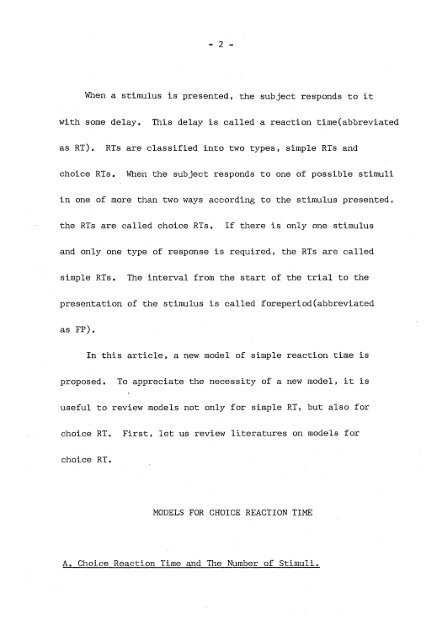A two-state model of simple reaction time
A two-state model of simple reaction time
A two-state model of simple reaction time
You also want an ePaper? Increase the reach of your titles
YUMPU automatically turns print PDFs into web optimized ePapers that Google loves.
- 2 -<br />
When a stimulus is presented, the subject responds to it<br />
with some delay. This delay is called a <strong>reaction</strong> <strong>time</strong>(abbreviated<br />
as RT). RTs are classified into <strong>two</strong> types, <strong>simple</strong> RTs and<br />
choice RTs. When the subject responds to one <strong>of</strong> possible stimuli<br />
in one <strong>of</strong> more than <strong>two</strong> ways according to the stimulus presented,<br />
the RTs are called choice RTs. If there is only one stimulus<br />
and only one type <strong>of</strong> response is required, the RTs are called<br />
<strong>simple</strong> RTs. The interval from the start <strong>of</strong> the trial to the<br />
presentation <strong>of</strong> the stimulus is called foreperiod(abbreviated<br />
as FP).<br />
In this article, a new <strong>model</strong> <strong>of</strong> <strong>simple</strong> <strong>reaction</strong> <strong>time</strong> is<br />
proposed. To appreciate the necessity <strong>of</strong> a new <strong>model</strong>, it is<br />
useful to review <strong>model</strong>s not only for <strong>simple</strong> RT, but also for<br />
choice RT. First, let us review literatures on <strong>model</strong>s for<br />
choice RT.<br />
MODELS FOR CHOICE REACTION TIME<br />
A. Choice Reaction Time and The Number <strong>of</strong> Stimuli.

















